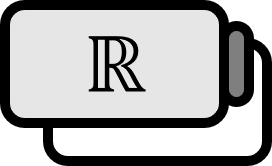Proof of Leibniz's Theorem
Theorem
$$ \dfrac{d}{dx} (fg)=\dfrac{df}{dx}g+f\dfrac{dg}{dx} $$
$$ \begin{align*} \dfrac{d^n}{dx^n}(fg)&=\sum \limits_{k=0}^{n}\frac{n!}{(n-k)!k!}\dfrac{d^{n-k}f}{dx^{n-k}}\dfrac{d^k g}{dx^k} \\ &=\sum \limits_{k=0}^{n}{}_{n}\mathrm{C}_{k} \dfrac{d^{n-k}f}{dx^{n-k}}\dfrac{d^k g}{dx^k} \\ &=\sum \limits_{k=0}^{n} \binom{n}{k} \dfrac{d^{n-k}f}{dx^{n-k}}\dfrac{d^k g}{dx^k} \end{align*} $$
Description
Also known as Leibniz’s rule.
The first equation is a well-known formula, often referred to as the product rule or the rule of product for differentiation. It simply expresses the result when the product of two functions is differentiated once. More generally, the equation below represents the result when differentiated $n$ times. Since a polynomial can become $0$ by being differentiated repeatedly, the result can be easily calculated without directly differentiating $n$ times.
There are also many theorems or formulas related to differentiation and integration named after Leibniz.
Proof
Let’s call $D$ the following differential operator.
$$ D=\dfrac{d}{dx} $$
For example, $Df(x)=\dfrac{df(x)}{dx}$ is. If $D$ is used to express the differentiation of $fg$, it looks like the following.
$$ \dfrac{d}{dx}(fg)=gDf+fDg $$
At this time, let’s say $D_{f}$ is an operator that only applies to $f$, and $D_{g}$ is an operator that only applies to $g$. Then, the above formula is expressed as follows.
$$ (D_{f}+D_{g})(fg)=gDf+fDg $$
Then you get:
$$ \dfrac{d}{dx}(fg)=(D_{f}+D_{g})(fg) $$
$$ \dfrac{d^2}{dx^2}(fg)=D(D_{f}+D_{g})(fg) $$
At this point, since $D$ is a differential operator, the order of operations doesn’t matter. In other words, it means $DD_{f}f=D_{f}Df$. Thus, the formula is as follows.
$$ \begin{align*} \dfrac{d^2}{dx^2}(fg) &= D(D_{f}+D_{g})(fg) \\ &= (D_{f}+D_{g})D(fg) \\ &= (D_{f}+D_{g})(D_{f}+D_{g})(fg) \\ &= (D_{f}+D_{g})^2 (fg) \end{align*} $$
As mentioned above, since $D$ allows for the commutativity of multiplication, it can be expressed as the last line. Extended to $n$ times of differentiation, it looks like the following.
$$ \dfrac{d^n}{dx^n} (fg)=(D_{f}+D_{g})^n(fg) $$
Since the commutative law holds, the binomial theorem can be applied. Using the binomial theorem, you get:
$$ \begin{align*} \dfrac{d^n}{dx^n} (fg) &= (D_{f}+D_{g})^n(fg) \\ &= \sum \limits_{k=0} ^n {}_{n}\mathrm{C} _{k} {D_{f}}^{n-k} {D_{g}}^{k}(fg) \\ &=\sum \limits_{k=0} ^n {}_{n}\mathrm{C} _{k} {D_{f}}^{n-k} f{D_{g}}^{k}g \\ &= \sum \limits_{k=0} ^n {}_{n}\mathrm{C} _{k} \dfrac{d^{n-k}f}{dx^{n-k}} \dfrac{d^k g}{dx^k} \\ &= \sum \limits_{k=0} ^n {}_{n}\mathrm{C} _{k} f^{(n-k)} g^{(k)} \end{align*} $$
■
Example
1
- Find $\dfrac{d^7}{dx^7}( x \sin x)$.
If $x$ and $\sin x$ are set respectively as $g$ and $f$ from the proof above, by Leibniz’s rule,
$$ \dfrac{d^7}{dx^7}( x \sin x)=\sum \limits_{k=0} ^7 {}_{7} \mathrm{C}_{k} \dfrac{d ^{n-k} } {dx^{n-k} }(\sin x) \dfrac{d^k}{dx^k} (x) $$
When $k \ge 2$, since it is $\dfrac{d^k}{dx^k}(x)=0$, only the two terms $k=0,1$ remain. Therefore,
$$ \begin{align*} \dfrac{d^7}{dx^7} ( x \sin x ) &= {}_{7} \mathrm{C} _{0} \dfrac{d^7}{dx^7}(\sin x) x + {}_{7}\mathrm{C}_{1} \dfrac{d^6}{dx^6} (\sin x) \\ &= -x \cos x -7\sin x \end{align*} $$
■
2
- Find $\dfrac{d^{10}}{dx^{10}} ( x^2 e^{-x} )$.
If $x^2$ and $e^{-x}$ are set respectively as $g$ and $f$ from the proof above, by Leibniz’s rule,
$$ \dfrac{d^{10}}{dx^{10}} (x^2 e^{-x}) = \sum \limits _{k=0} ^{10} {}_{10} \mathrm{C} _{k} \dfrac{d^{10-k}}{dx^{10-k}}(e^{-x}) \dfrac{d^k}{dx^k} ( x^2) $$
When $k \ge 3$, since it is $\dfrac{d^k}{dx^k} (x^2)=0$, only the three terms that are $k=0,1,2$ remain. Therefore,
$$ \begin{align*} \dfrac{d^{10} } {dx^{10} } (x^2 e^{-x}) &= {}_{10} \mathrm{C}_{0} \dfrac{d^{10}}{dx^{10}} (e^{-x}) x^2 + {}_{10} \mathrm{C} _{1} \dfrac{d^9}{dx^9}(e^{-x}) \dfrac{d}{dx}(x^2) + {}_{10}\mathrm{C}_2 \dfrac{d^8}{dx^8} ( e^{-x} ) \dfrac{d^2}{dx^2} (x^2) \\ &= x^2 e^{-x} -20 x e^{-x} + 90e^{-x} \end{align*} $$
■
